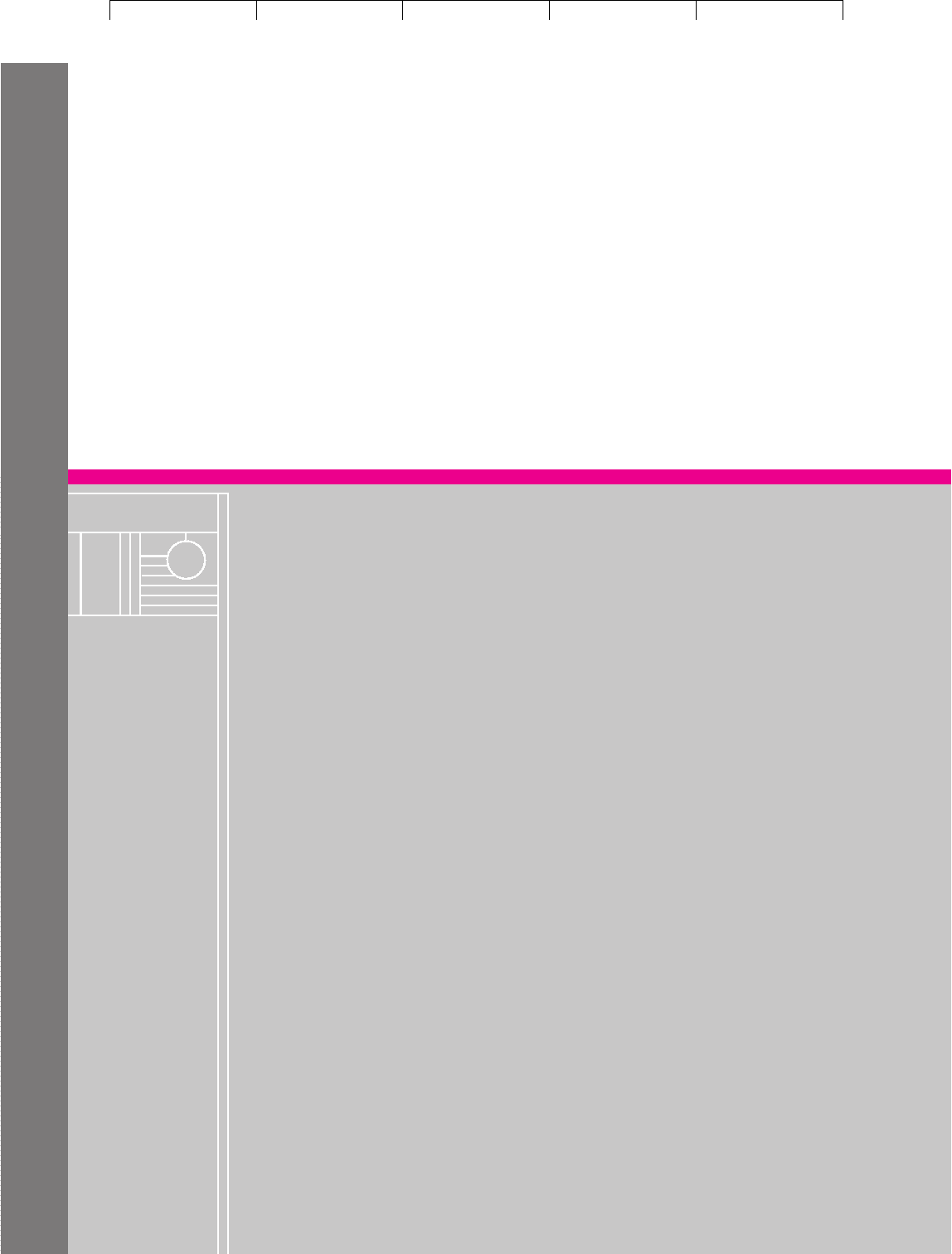Brealey, Myers. Principles of Corporate Finance. 7th edition
Подождите немного. Документ загружается.


Brealey−Meyers:
Principles of Corporate
Finance, Seventh Edition
IV. Financial Decisions and
Market Efficiency
15. How Corporations Issue
Securities
© The McGraw−Hill
Companies, 2003
420 PART IV Financing Decisions and Market Efficiency
As you would expect, it costs less to arrange a private placement than to make
a public issue. This is a particular advantage for companies making smaller issues.
In 1990 the SEC relaxed its restrictions on who can buy and trade unregistered
securities. The new rule, Rule 144A, allows large financial institutions (known as
qualified institutional buyers) to trade unregistered securities among themselves.
Rule 144A was intended to increase liquidity and reduce interest rates and issue
costs for private placements. It was aimed largely at foreign corporations deterred
by registration requirements in the United States. The SEC argued that such firms
would welcome the opportunity to issue unregistered stocks and bonds which
could then be freely traded by large U.S. financial institutions.
Rule 144A issues have proved very popular, particularly with foreign issuers.
There has also been an increasing volume of secondary trading in Rule 144A
issues.
SUMMARY
In this chapter we have summarized the various procedures for issuing corpo-
rate securities. We first looked at how infant companies raise venture capital to
carry them through to the point at which they can make their first public issue
of stock. We then looked at how companies can make further public issues of se-
curities by a general cash offer. Finally, we reviewed the procedures for a private
placement.
It is always difficult to summarize a summary. Instead we will remind you of
some of the most important implications for the financial manager who must de-
cide how to issue capital.
Larger is cheaper There are economies of scale in issuing securities. It is cheaper
to go to the market once for $100 million than to make two trips for $50 million
each. Consequently firms bunch security issues. That may often mean relying on
short-term financing until a large issue is justified. Or it may mean issuing more
than is needed at the moment in order to avoid another issue later.
Watch out for underpricing Underpricing is a hidden cost to the existing share-
holders. Fortunately, it is usually serious only for companies that are selling stock
to the public for the first time.
The winner’s curse may be a serious problem with IPOs Would-be investors in an
initial public offering (IPO) do not know how other investors will value the stock
and they worry that they are likely to receive a larger allocation of the overpriced
issues. Careful design of issue procedure may reduce the winner’s curse.
New stock issues may depress the price The extent of this price pressure varies,
but for industrial issues in the United States the fall in the value of the existing
stock may amount to a significant proportion of the money raised. This pressure
is due to the information that the market reads into the company’s decision to is-
sue stock.
Shelf registration often makes sense for debt issues by blue-chip firms Shelf regis-
tration reduces the time taken to arrange a new issue, it increases flexibility, and it
Visit us at www.mhhe.com/bm7e

Brealey−Meyers:
Principles of Corporate
Finance, Seventh Edition
IV. Financial Decisions and
Market Efficiency
15. How Corporations Issue
Securities
© The McGraw−Hill
Companies, 2003
CHAPTER 15 How Corporations Issue Securities 421
may cut underwriting costs. It seems best suited for debt issues by large firms that
are happy to switch between investment banks. It seems less suited for issues of
unusually risky or complex securities or for issues by small companies that are
likely to benefit from a close relationship with an investment bank.
APPENDIX A
The Privileged Subscription or Rights Issue
Instead of making an issue of stock to investors at large, companies sometimes give
their existing shareholders the right of first refusal. Such issues are known as priv-
ileged subscription, or rights, issues. In some countries, such as the United States and
Japan, rights issues have become a rarity and general cash offers are the norm. In
Europe equity must generally be sold by rights, though companies have increas-
ingly lobbied for the freedom to make general cash offers.
Here is an example of a rights issue. In January 2001 the French building-
materials company, Lafarge, needed to raise a1.1 billion of new equity. It did so
by offering its existing stockholders the right to buy one new share for every
eight shares that they currently held. The new shares were priced at a80 each,
nearly 20 percent below the preannouncement price of a99.65.
Imagine that you hold eight shares of Lafarge stock just prior to the rights issue.
Your holding is therefore worth 8 ⫻ a99.65 ⫽ a797.20. Lafarge’s offer gives you the
opportunity to buy one additional share for a80. If you buy the new share, your
holding increases to nine shares and the value of your holding increases by the ex-
tra a80 to 797.20 ⫹ 80 ⫽ a877.20. Therefore after the issue the value of each share
is no longer a99.65, but slightly lower at 877.20/9 ⫽ a97.47.
How much is your right to buy one new share for a80 worth? The answer is
a17.47. An investor, who could buy a share worth a97.47 for a80, would be willing
to pay a17.47 for the right to do so.
It should be clear on reflection that Lafarge could have raised the same
amount of money on a variety of terms. For example, instead of a 1-for-8 at a80,
it could have made a 1-for-4 at a40. In this case it would have sold twice as many
shares at half the price. If you held eight Lafarge shares before the issue, you
could subscribe for two new shares at a40 each. This would give you 10 shares in
total worth 797.20 ⫹ (2 ⫻ 40) ⫽ a877.20. After the issue the value of each share
would be 877.20/10 ⫽ a87.72. This is less than in the case of the 1-for-8 issue but
then you would have the compensation of owning 10 rather than 9 shares. Sup-
pose you wanted to sell your right to buy a new share for a40? Investors would
be prepared to pay you a47.72 for this right. They would then pay over a40 to La-
farge and receive a share with a market value of a87.72.
Our example illustrates that, as long as the company successfully sells the new
shares, the issue price in a rights offering is irrelevant.
46
That is not the case in a
general cash offer. If the company sells new stock for less than the market will bear,
the buyer makes a profit at the expense of existing shareholders. Although this
46
If the share price stayed at a97.47, Lafarge’s shareholders would be very happy to buy new shares
for a80. However, if the price fell below a80, shareholders would no longer exercise their option to
buy new shares. To guard against this possibility, it is common to arrange standby agreements re-
quiring the underwriters to buy any unwanted stock.
Visit us at www.mhhe.com/bm7e

Brealey−Meyers:
Principles of Corporate
Finance, Seventh Edition
IV. Financial Decisions and
Market Efficiency
15. How Corporations Issue
Securities
© The McGraw−Hill
Companies, 2003
422 PART IV Financing Decisions and Market Efficiency
danger creates a natural presumption in favor of the rights issue, it can be argued
that underpricing is a serious problem only in the case of an initial public offer,
when a rights issue is not a feasible alternative.
APPENDIX B
Marvin’s New-Issue Prospectus
47
PROSPECTUS
900,000 Shares
Marvin Enterprises Inc.
Common Stock ($.10 par value)
Of the 900,000 shares of Common Stock offered hereby, 500,000 shares are being
sold by the Company and 400,000 shares are being sold by the Selling Stockhold-
ers. See “Principal and Selling Stockholders.” The Company will not receive any of
the proceeds from the sale of shares by the Selling Stockholders.
Before this offering there has been no public market for the Common Stock. These
securities involve a high degree of risk. See “Certain Considerations.”
THESE SECURITIES HAVE NOT BEEN APPROVED OR DISAPPROVED BY
THE SECURITIES AND EXCHANGE COMMISSION NOR HAS THE COM-
MISSION PASSED ON THE ACCURACY OR ADEQUACY OF THIS
PROSPECTUS. ANY REPRESENTATION TO THE CONTRARY IS A CRIMI-
NAL OFFENSE.
Visit us at www.mhhe.com/bm7e
47
Most prospectuses have content similar to that of the Marvin prospectus but go into considerably
more detail. Also we have omitted Marvin’s financial statements.
Proceeds to
Price to Underwriting Proceeds to Selling
Public Discount Company
1
Stockholders
1
Per share $80.00 $5.60 $74.40 $74.40
Total
2
$72,000,000 $5,040,000 $37,200,000 $29,760,000
1
Before deducting expenses payable by the Company estimated at $820,000, of which $455,555 will be paid by
the Company and $364,445 will be paid by the Selling Stockholders.
2
The Company has granted to the Underwriters an option to purchase up to an additional 135,000 shares at the
initial public offering price, less the underwriting discount, solely to cover overallotment.
The Common Stock is offered subject to receipt and acceptance by the Underwrit-
ers, to prior sale, and to the Underwriters’s right to reject any order in whole or in
part and to withdraw, cancel, or modify the offer without notice.
Klein Merrick Inc. February 3, 2019
No person has been authorized to give any information or to make any represen-
tations, other than as contained therein, in connection with the offer contained in
this Prospectus, and, if given or made, such information or representations must
not be relied upon. This Prospectus does not constitute an offer of any securities
other than the registered securities to which it relates or an offer to any person in
any jurisdiction where such an offer would be unlawful. The delivery of this
Prospectus at any time does not imply that information herein is correct as of any
time subsequent to its date.

Brealey−Meyers:
Principles of Corporate
Finance, Seventh Edition
IV. Financial Decisions and
Market Efficiency
15. How Corporations Issue
Securities
© The McGraw−Hill
Companies, 2003
CHAPTER 15 How Corporations Issue Securities 423
Visit us at www.mhhe.com/bm7e
IN CONNECTION WITH THIS OFFERING, THE UNDERWRITERS MAY OVER-
ALLOT OR EFFECT TRANSACTIONS WHICH STABILIZE OR MAINTAIN THE
MARKET PRICE OF THE COMMON STOCK OF THE COMPANY AT A LEVEL
ABOVE THAT WHICH MIGHT OTHERWISE PREVAIL IN THE OPEN MARKET.
SUCH STABILIZING, IF COMMENCED, MAY BE DISCONTINUED AT ANY TIME.
Prospectus Summary
The following summary information is qualified in its entirety by the detailed information
and financial statements appearing elsewhere in this Prospectus.
The Offering
Common Stock offered by the Company . . . . . . . . . . . . . . . . . . . . . . .500,000 shares
Common Stock offered by the Selling Stockholders . . . . . . . . . . . . . .400,000 shares
Common Stock to be outstanding after this offering . . . . . . . . . . . .4,100,000 shares
Use of Proceeds
For the construction of new manufacturing facilities and to provide working capital.
The Company
Marvin Enterprises Inc. designs, manufactures, and markets gargle blasters for do-
mestic use. Its manufacturing facilities employ integrated microcircuits to control
the genetic engineering processes used to manufacture gargle blasters.
The Company was organized in Delaware in 2013.
Use of Proceeds
The net proceeds of this offering are expected to be $36,744,445. Of the net proceeds,
approximately $27.0 million will be used to finance expansion of the Company’s prin-
cipal manufacturing facilities. The balance will be used for working capital.
Certain Considerations
Investment in the Common Stock involves a high degree of risk. The following fac-
tors should be carefully considered in evaluating the Company:
Substantial Capital Needs The Company will require additional financing to continue
its expansion policy. The Company believes that its relations with its lenders are good,
but there can be no assurance that additional financing will be available in the future.
Licensing The expanded manufacturing facilities are to be used for the production
of a new imploding gargle blaster. An advisory panel to the U.S. Food and Drug
Administration (FDA) has recommended approval of this product for the U.S.
market but no decision has yet been reached by the full FDA committee.
Dividend Policy
The company has not paid cash dividends on its Common Stock and does not an-
ticipate that dividends will be paid on the Common Stock in the foreseeable future.
Management
The following table sets forth information regarding the Company’s directors, ex-
ecutive officers, and key employees.
Name Age Position
George Marvin 32 President, Chief Executive Officer, & Director
Mildred Marvin 28 Treasurer & Director
Chip Norton 30 General Manager
George Marvin—George Marvin established the Company in 2013 and has been its
Chief Executive Officer since that date. He is a past president of the Institute of

Brealey−Meyers:
Principles of Corporate
Finance, Seventh Edition
IV. Financial Decisions and
Market Efficiency
15. How Corporations Issue
Securities
© The McGraw−Hill
Companies, 2003
424 PART IV Financing Decisions and Market Efficiency
Visit us at www.mhhe.com/bm7e
Gargle Blasters and has recently been inducted into the Confrèrie des gargarisateurs.
Mildred Marvin—Mildred Marvin has been employed by the Company since 2013.
Chip Norton—Mr. Norton has been General Manager of the Company since 2013.
He is a former vice-president of Amalgamated Blasters, Inc.
Executive Compensation
The following table sets forth the cash compensation paid for services rendered for
the year 2018 by the executive officers:
Name Capacity Cash Compensation
George Marvin President and Chief Executive Officer $300,000
Mildred Marvin Treasurer 220,000
Chip Norton General Manager 220,000
Certain Transactions
At various times between 2014 and 2017 First Meriam Venture Partners invested a
total of $8.5 million in the Company. In connection with this investment, First
Meriam Venture Partners was granted certain rights to registration under the Se-
curities Act of 1933, including the right to have their shares of Common Stock reg-
istered at the Company’s expense with the Securities and Exchange Commission.
Principal and Selling Stockholders
The following table sets forth certain information regarding the beneficial owner-
ship of the Company’s voting Common Stock as of the date of this prospectus by
(i) each person known by the Company to be the beneficial owner of more than 5
percent of its voting Common Stock, and (ii) each director of the Company who
beneficially owns voting Common Stock. Unless otherwise indicated, each owner
has sole voting and dispositive power over his or her shares.
Common Stock
Shares
Beneficially
Owned Prior to Shares Beneficially
Offering
Shares
Owned After Offer
1
Name of to Be
Beneficial Owner Number Percent Sold Number Percent
George Marvin 375,000 10.4 60,000 315,000 7.7
Mildred Marvin 375,000 10.4 60,000 315,000 7.7
Chip Norton 250,000 6.9 80,000 170,000 4.1
First Meriam 1,700,000 47.2 — 1,700,000 41.5
Venture Partners
TFS Investors 260,000 7.2 — 260,000 6.3
Centri-Venture
Partnership 260,000 7.2 — 260,000 6.3
Henry Pobble 180,000 5.0 — 180,000 4.4
Georgina Sloberg 200,000 5.6 200,000 — —
1
Assuming no exercise of the Underwriters’ overallotment option.
Description of Capital Stock
The Company’s authorized capital stock consists of 10,000,000 shares of voting
Common Stock.

Brealey−Meyers:
Principles of Corporate
Finance, Seventh Edition
IV. Financial Decisions and
Market Efficiency
15. How Corporations Issue
Securities
© The McGraw−Hill
Companies, 2003
CHAPTER 15 How Corporations Issue Securities 425
As of the date of this Prospectus, there are 10 holders of record of the Common Stock.
Under the terms of one of the Company’s loan agreements, the Company may not
pay cash dividends on Common Stock except from net profits without the written
consent of the lender.
Underwriting
Subject to the terms and conditions set forth in the Underwriting Agreement, the
Company has agreed to sell to each of the Underwriters named below, and each of
the Underwriters, for whom Klein Merrick Inc. are acting as Representatives, has
severally agreed to purchase from the Company, the number of shares set forth op-
posite its name below.
Number of Shares
Underwriters to Be Purchased
Klein Merrick, Inc. 300,000
Goldman Stanley, Inc. 300,000
Salomon, Buffett & Co. 100,000
Orange County Securities 100,000
Bank of New England 100,000
In the Underwriting Agreement, the several Underwriters have agreed, subject to
the terms and conditions set forth therein, to purchase all shares offered hereby if
any such shares are purchased. In the event of a default by any Underwriter, the
Underwriting Agreement provides that, in certain circumstances, purchase com-
mitments of the nondefaulting Underwriters may be increased or the Underwrit-
ing Agreement may be terminated.
There is no public market for the Common Stock. The price to the public for the
Common Stock was determined by negotiation between the Company and the Un-
derwriters and was based on, among other things, the Company’s financial and
operating history and condition, its prospects and the prospects for its industry in
general, the management of the Company, and the market prices of securities for
companies in businesses similar to that of the Company.
Legal Matters
The validity of the shares of Common Stock offered by the Prospectus is being
passed on for the Company by Dodson and Fogg and for the Underwriters by
Kenge and Carboy.
Experts
The consolidated financial statements of the Company have been so included in re-
liance on the reports of Hooper Firebrand, independent accountants, given on the
authority of that firm as experts in auditing and accounting.
Financial Statements
[Text and tables omitted.]
FURTHER
READING
The best sources on venture capital are the specialized journals. See, for example, recent issues of Ve n -
ture Capital Journal. The paper by Gompers and Lerner provides a review of the venture capital indus-
try. Sahlman’s paper is a very readable analysis of how venture capital financing is structured to provide
the right incentives and Kaplan and Stromberg’s paper examines a sample of venture capital investments:
P. A. Gompers and J. Lerner: “The Venture Capital Revolution,” Journal of Economic Perspec-
tives, 15:145–168 (Spring 2001).
Visit us at www.mhhe.com/bm7e

Brealey−Meyers:
Principles of Corporate
Finance, Seventh Edition
IV. Financial Decisions and
Market Efficiency
15. How Corporations Issue
Securities
© The McGraw−Hill
Companies, 2003
426 PART IV Financing Decisions and Market Efficiency
W. A. Sahlman: “Aspects of Financial Contracting in Venture Capital,” Journal of Applied Cor-
porate Finance, 1:23–26 (Summer 1988).
S. N. Kaplan and P. Stromberg, “Financial Contracting Theory Meets the Real World: An Em-
pirical Analysis of Venture Capital Contracts,” Review of Financial Studies, forthcoming.
There have been a number of studies of the market for initial public offerings of common stock. Good
articles to start with are:
K. Ellis, R. Michaely, and M. O’Hara: “When the Underwriter Is the Market Maker: An Ex-
amination of Trading in the IPO Aftermarket,” Journal of Finance, 55:1039–1074 (June 2000).
F. Cornelli and D. Goldreich: “Bookbuilding and Strategic Allocation,” Journal of Finance 56
(December 2001), pp. 2337–2369.
R. G. Ibbotson, J. L. Sindelar, and J. R. Ritter: “The Market’s Problems with the Pricing of Ini-
tial Public Offerings,” Journal of Applied Corporate Finance, 7:66–74 (Spring 1994).
T. Loughran and J. R. Ritter: “The New Issues Puzzle,” Journal of Finance, 50:23–51
(March 1995).
K. Rock: “Why New Issues Are Underpriced,” Journal of Financial Economics, 15:187–212
(January–February 1986).
A useful introduction to the design of auction procedures is:
P. Milgrom, “Auctions and Bidding: A Primer,” Journal of Economic Perspectives, 3:3–22 (1989).
The significant and permanent fall in price after a seasoned stock issue in the United States is docu-
mented in the Asquith and Mullins paper. Myers and Majluf relate this price fall to the informa-
tion associated with security issues:
P. Asquith and D. W. Mullins: “Equity Issues and Offering Dilution,” Journal of Financial Eco-
nomics, 15:61–90 (January–February 1986).
S. C. Myers and N. S. Majluf: “Corporate Financing and Investment Decisions When Firms
Have Information That Investors Do Not Have,” Journal of Financial Economics, 13:187–222
(June 1984).
QUIZ
1. After each of the following issue methods we have listed two types of issue. Choose the
one more likely to employ that method.
a. Rights issue (initial public offer/further sale of an already publicly traded stock)
b. Rule 144A issue (international bond issue/U.S. bond issue by a foreign corporation)
c. Private placement (issue of existing stock/bond issue by an industrial company)
d. Shelf registration (initial public offer/bond issue by a large industrial company)
2. Each of the following terms is associated with one of the events beneath. Can you match
them up?
a. Best efforts
b. Bookbuilding
c. Shelf registration
d. Rule 144A
Events:
a. Investors indicate to the underwriter how many shares they would like to buy in a
new issue and these indications are used to help set the price.
b. The underwriter accepts responsibility only to try to sell the issue.
c. Some issues are not registered but can be traded freely among qualified
institutional buyers.
d. Several tranches of the same security may be sold under the same registration. (A
“tranche” is a batch, a fraction of a larger issue.)
3. Explain what each of the following terms or phrases means:
a. Venture capital
b. Primary offering
Visit us at www.mhhe.com/bm7e

Brealey−Meyers:
Principles of Corporate
Finance, Seventh Edition
IV. Financial Decisions and
Market Efficiency
15. How Corporations Issue
Securities
© The McGraw−Hill
Companies, 2003
CHAPTER 15 How Corporations Issue Securities 427
Visit us at www.mhhe.com/bm7e
c. Secondary offering
d. Registration statement
e. Winner’s curse
f. Bought deal
4. For each of the following pairs of issues, which is likely to involve the lower propor-
tionate underwriting and administrative costs?
a. A large issue/a small issue.
b. A bond issue/a common stock issue.
c. Initial public offering/subsequent issue of stock.
d. A small private placement of bonds/a small general cash offer of bonds.
5. True or false?
a. Venture capitalists typically provide first-stage financing sufficient to cover all
development expenses. Second-stage financing is provided by stock issued in an IPO.
b. Large companies’ stocks may be listed and traded on several different international
exchanges.
c. Stock price generally falls when the company announces a new issue of shares.
This is attributable to the information released by the decision to issue.
6. Look back at the prospectus for Marvin’s IPO (Appendix B):
a. If there is unexpectedly heavy demand for the issue, how many extra shares can
the underwriter buy?
b. How many shares are to be sold in the primary offering? How many will be sold in
the secondary offering?
c. One day post-IPO, Marvin shares traded at $105. What was the degree of
underpricing? How does that compare with the average degree of underpricing for
IPOs in the United States?
d. There are three kinds of cost to Marvin’s new issue—underwriting expense,
administrative costs, and underpricing. What was the total dollar cost of the
Marvin issue?
7. You need to choose between making a public offering and arranging a private place-
ment. In each case the issue involves $10 million face value of 10-year debt. You have
the following data for each:
• A public issue: The interest rate on the debt would be 8.5 percent, and the debt would
be issued at face value. The underwriting spread would be 1.5 percent, and other ex-
penses would be $80,000.
• A private placement: The interest rate on the private placement would be 9 percent, but
the total issuing expenses would be only $30,000.
a. What is the difference in the proceeds to the company net of expenses?
b. Other things being equal, which is the better deal?
c. What other factors beyond the interest rate and issue costs would you wish to
consider before deciding between the two offers?
8. In what ways does the bookbuilding method of selling new issues differ from a formal
auction?
9. Associated Breweries is planning to market unleaded beer. To finance the venture it
proposes to make a rights issue at $10 of one new share for each two shares held.
(The company currently has outstanding 100,000 shares priced at $40 a share.)
Assuming that the new money is invested to earn a fair return, give values for the
following:
a. Number of new shares.
b. Amount of new investment.
c. Total value of company after issue.
d. Total number of shares after issue.
e. Stock price after the issue.
f. Price of the right to buy one new share.

Brealey−Meyers:
Principles of Corporate
Finance, Seventh Edition
IV. Financial Decisions and
Market Efficiency
15. How Corporations Issue
Securities
© The McGraw−Hill
Companies, 2003
428 PART IV Financing Decisions and Market Efficiency
PRACTICE
QUESTIONS
1. Here is a further vocabulary quiz. Briefly explain each of the following:
a. Zero-stage vs. first- or second-stage financing.
b. After-the-money valuation.
c. Mezzanine financing.
d. Road show.
e. Best-efforts offer.
f. Qualified institutional buyer.
g. Blue-sky laws.
2. a. “A signal is credible only if it is costly.” Explain why management’s willingness
to invest in Marvin’s equity was a credible signal. Was its willingness to accept
only part of the venture capital that would eventually be needed also a credible
signal?
b. “When managers take their reward in the form of increased leisure or executive
jets, the cost is borne by the shareholders.” Explain how First Meriam’s financing
package tackled this problem.
3. Describe the alternative procedures for IPOs of common stock. What are their advan-
tages and disadvantages?
4. In the UK initial public offerings of common stock are usually sold by an offer for sale.
Mr. Bean has observed that on average these stocks are underpriced by about 9 percent
and for some years has followed a policy of applying for a constant proportion of each
issue. He is therefore disappointed and puzzled to find that this policy has not resulted
in a profit. Explain to him why this is so.
5. Get ahold of the prospectus for a recent IPO. How do the issue costs compare with
(a) those of the Marvin issue and (b) those shown in Table 15.3? Can you suggest rea-
sons for the differences?
6. Why are the costs of debt issues less than those of equity issues? List the possible
reasons.
7. “For small issues of common stock, the issue costs to about 10 percent of the proceeds.
This means that the opportunity cost of external equity capital is about 10 percentage
points higher than that of retained earnings.” Does the speaker have a point?
8. There are three reasons that a common stock issue might cause a fall in price: (a) the
price fall is needed to absorb the extra supply, (b) the issue causes temporary price pres-
sure until it has been digested, and (c) management has information that stockholders
do not have. Explain these reasons more fully. Which do you find most plausible? Is
there any way that you could seek to test whether you are right?
9. In what circumstances is a private placement preferable to a public issue? Explain.
10. Construct a simple example to show the following:
a. Existing shareholders are made worse off when a company makes a cash offer of
new stock below the market price.
b. Existing shareholders are not made worse off when a company makes a rights
issue of new stock below the market price even if the new stockholders do not
wish to take up their rights.
11. In 1998 the Pandora Box Company made a rights issue at $5 a share of one new share
for every four shares held. Before the issue there were 10 million shares outstanding
and the share price was $6.
a. What was the total amount of new money raised?
b. What was the value of the right to buy one new share?
d. What was the prospective stock price after the issue?
e. How far could the total value of the company fall before shareholders would be
unwilling to take up their rights?
Visit us at www.mhhe.com/bm7e

Brealey−Meyers:
Principles of Corporate
Finance, Seventh Edition
IV. Financial Decisions and
Market Efficiency
15. How Corporations Issue
Securities
© The McGraw−Hill
Companies, 2003
CHAPTER 15 How Corporations Issue Securities 429
CHALLENGE
QUESTIONS
1. a. Why do venture capital companies prefer to advance money in stages? If you were
the management of Marvin Enterprises, would you have been happy with such an
arrangement? With the benefit of hindsight did First Meriam gain or lose by ad-
vancing money in stages?
b. The price at which First Meriam would invest more money in Marvin was not
fixed in advance. But Marvin could have given First Meriam an option to buy more
shares at a preset price. Would this have been better?
c. At the second stage Marvin could have tried to raise money from another venture
capital company in preference to First Meriam. To protect themselves against this,
venture capital firms sometimes demand first refusal on new capital issues. Would
you recommend this arrangement?
2. Explain the difference between a uniform-price auction and a discriminatory auction.
Why might you prefer to sell securities by one method rather than another?
3. Here is recent financial data on Pisa Construction, Inc.
Visit us at www.mhhe.com/bm7e
12. Problem 11 contains details of a rights offering by Pandora Box. Suppose that the com-
pany had decided to issue new stock at $4. How many new shares would it have
needed to sell to raise the same sum of money? Recalculate the answers to questions (b)
to (d) in question 11. Show that the shareholders are just as well off if the company is-
sues the shares at $4 rather than $5.
Stock price $40 Market value of firm $400,000
Number of shares 10,000 Earnings per share $4
Book net worth $500,000 Return on investment 8%
Pisa has not performed spectacularly to date. However, it wishes to issue new shares to
obtain $80,000 to finance expansion into a promising market. Pisa’s financial advisers
think a stock issue is a poor choice because, among other reasons, “sale of stock at a
price below book value per share can only depress the stock price and decrease share-
holders’ wealth.” To prove the point they construct the following example: “Suppose
2,000 new shares are issued at $40 and the proceeds are invested. (Neglect issue costs.)
Suppose return on investment doesn’t change. Then
Book net worth ⫽ $580,000
Total earnings ⫽ .08(580,000) ⫽ $46,400
Earnings per share = 46,400 = $3.87
12,000
Thus, EPS declines, book value per share declines, and share price will decline propor-
tionately to $38.70.”
Evaluate this argument with particular attention to the assumptions implicit in the
numerical example.
4. Do you think that there could be a shortage of finance for new ventures? Should the
government help to provide such finance and, if so, how?
